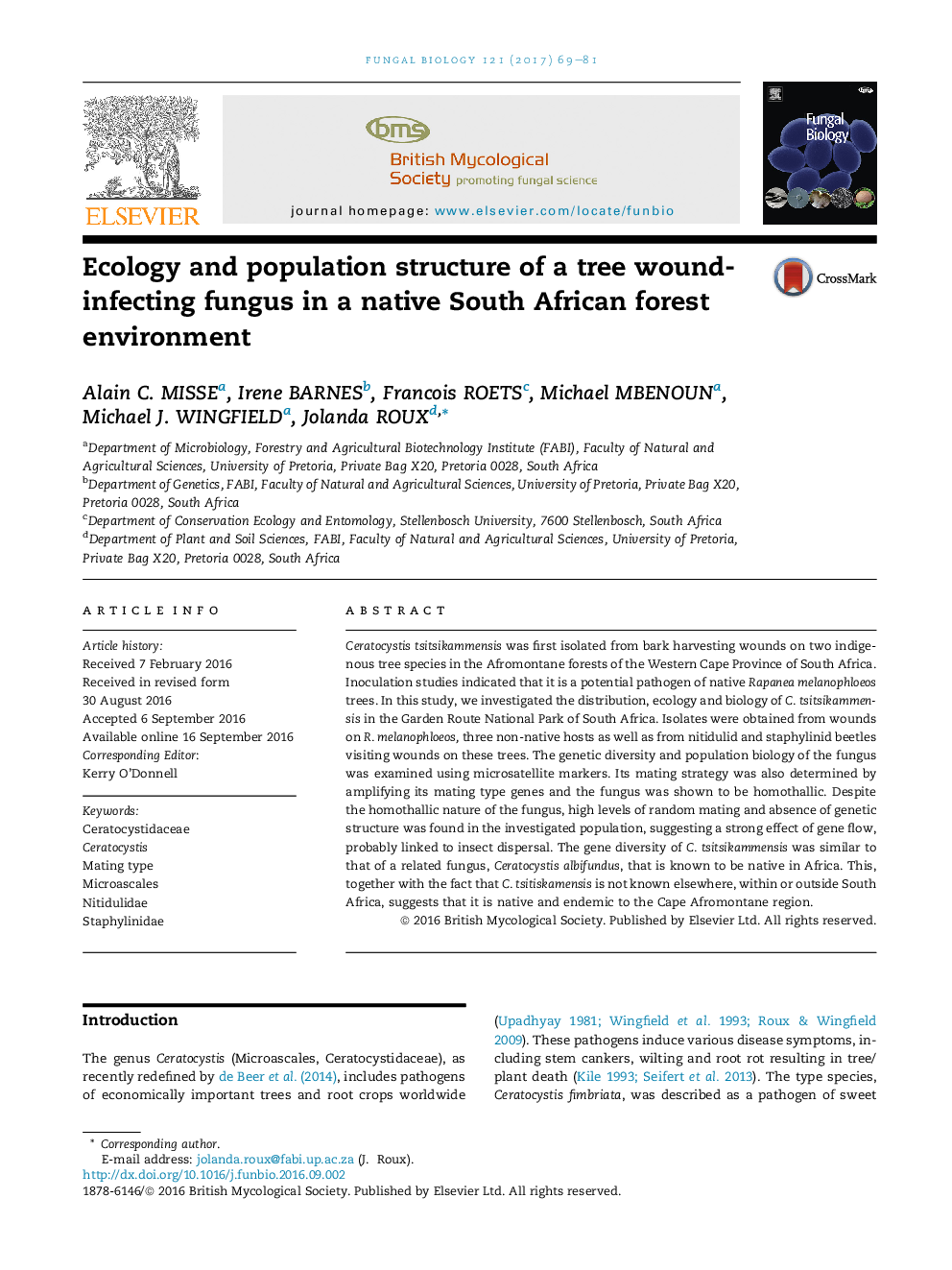| Article ID | Journal | Published Year | Pages | File Type |
|---|---|---|---|---|
| 5739571 | Fungal Biology | 2017 | 13 Pages |
â¢Ceratocystis tsitsikammensis infects native and non-native hosts in South Africa.â¢Both nitidulid and staphylinid beetles are associated with C. tsitsikammensis.â¢Ceratocystis tsitsikammensis is most likely native to the GRNP.
Ceratocystis tsitsikammensis was first isolated from bark harvesting wounds on two indigenous tree species in the Afromontane forests of the Western Cape Province of South Africa. Inoculation studies indicated that it is a potential pathogen of native Rapanea melanophloeos trees. In this study, we investigated the distribution, ecology and biology of C. tsitsikammensis in the Garden Route National Park of South Africa. Isolates were obtained from wounds on R. melanophloeos, three non-native hosts as well as from nitidulid and staphylinid beetles visiting wounds on these trees. The genetic diversity and population biology of the fungus was examined using microsatellite markers. Its mating strategy was also determined by amplifying its mating type genes and the fungus was shown to be homothallic. Despite the homothallic nature of the fungus, high levels of random mating and absence of genetic structure was found in the investigated population, suggesting a strong effect of gene flow, probably linked to insect dispersal. The gene diversity of C. tsitsikammensis was similar to that of a related fungus, Ceratocystis albifundus, that is known to be native in Africa. This, together with the fact that C. tsitiskamensis is not known elsewhere, within or outside South Africa, suggests that it is native and endemic to the Cape Afromontane region.
